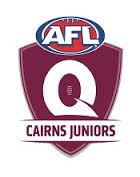The pros and cons of AFL matches in regional Australia
- Thursday, July 24 2014 @ 08:24 pm ACST
- Contributed by: Wesley Hull
- Views: 2,922


With the AFL season closing in on finals time the smaller regional matches have come to an end for 2014. In saying that the two Tasmanian venues at Aurora Stadium and Blundstone Arena are still active but are part of a six match deal for footy in the state, as is Star Track Arena (formerly Manuka Oval) in Canberra which has three matches throughout the year.
The matches referred to here are the one-off regional showcases in Alice Springs, Darwin and Cairns which finished last weekend when the Western Bulldogs upset the Gold Coast Suns up at Cazalys Stadium in Far North Queensland.
Now that these matches are done and dusted, it is possible to look at the value of these games. But that value cannot simply be results or money made. When considering value, local aspects need to be taken into an overall equation.
There is an argument from down south that taking clubs away from their home fans is not always a popular move. Some say that the average fan cannot afford to travel to such far flung locations, which is probably true. Even if this results in better TV coverage, there is nothing like watching your team from the grandstands.
Another argument used by some, though rarely the clubs, is the loss of home ground advantages. This argument is muted though by the creation of neutral venues.
There may or may not be credence in these arguments, but from the point of view of a “North Queenslander” like myself these arguments pale into insignificance when compared to the benefits for the regions visited by the travelling AFL teams. Whilst some less enlightened writers tried to paint the recent Cairn match in a negative light, the overwhelming response from everyone I have spoken to is wildly positive. I cannot speak on behalf of the people of Darwin or Alice Springs, but I do know that many of the benefits to Cairns are mirrored in the experiences of our Northern Territory neighbours.
This article will not be a chronological list of events. Instead I will detail aspects of my own experience, which when magnified across the region would amount to a very positive experience for all Australian Rules followers in the north.
So what did we get out of the visit?
The most obvious answers include massive publicity for the code locally. There were opportunities for our players to interact with actual AFL players. The ability to watch a match of the highest level and begin to see what is required to reach the top. Local coaches learned through watching and listening how to better coach their players.
Not only was I able to get an interview with Kevin Sheedy (see article: http://www.worldfootynews.com/article...1173123974 ), but I was able to get a private chat in the grandstand with Guy McKenna, coach of the Gold Coast Suns. This informal chat covered training to kick into the wind, how to set up behind the play and advice for me to pass on to my own team on how to win under enormous odds. We don’t get that kind of free advice very often.
The coaching “master-class”, held the Thursday prior to the match, allowed us to hear from Brendan McCartney (Western Bulldogs coach) about how to put together a club with the right personnel by telling us the story of how the Geelong Powerhouse was put together over a number of years. Kevin Sheedy was also there and told many stories, but most harked back to his Richmond and Essendon days. The array of topics he covered was too vast to list here, but what incredible insights we were given into training, coaching, club building, relationships and so much more.
During other events a chat with Gold Coast Suns player Josh Hall enlightened me to the sacrifices needed to get to the top. Being a Townsville boy his story resonated to me, as well as the other junior players listening. On the day of the match a chat with Bulldogs player Tom Campbell gave insights into player decision making.
When Western Bulldogs players, Liam Picken, Lachie Hunter and Jordan Roughead arrived at our club ground to join in training with our juniors the excitement was palpable. Not only did these players have time to chat with kids, but they gave our kids invaluable tips, joined in training drills with our younger players and joined in a small match with our older ones. What an experience for these kids.
The value of the visit of these two clubs has been enormous in encouraging young people in far North Queensland to either remain with the game or give the game a try. The net result of that down the track could be huge as numbers of junior players increase. Without these visits we would all find a way to recruit and retain players. But with these visits our job locally has been made so much easier. The examples I gave largely represent one local club. By multiplying this success across all local clubs the impact is tremendous.
The AFL is sure to look at Darwin, Alice Springs and Cairns again for matches next year. It is hoped that when the decisions are made to fixture games in these centres in 2015 and beyond a whole game benefit is considered – balancing the needs of the AFL clubs and supporters with the tremendous impact these games have on the centres they visit.
Of course, sitting at Cazalys Stadium watching the Suns battle the Bulldogs for premiership points was a pretty special finale for all who went.
Let’s hope we see everyone back again next year.


 RSS news
RSS news Twitter
Twitter Facebook
Facebook